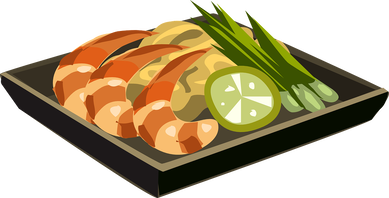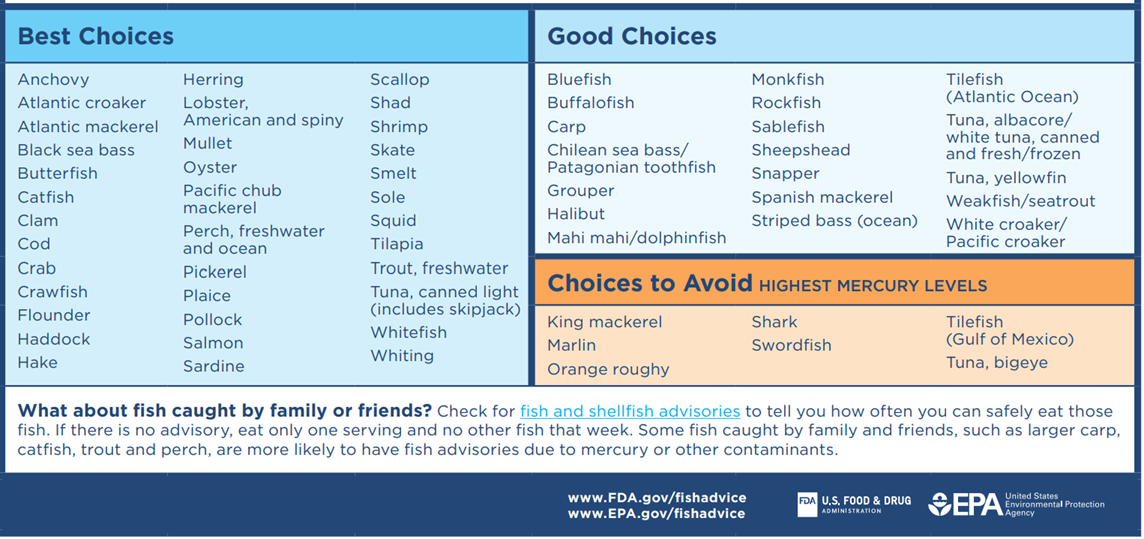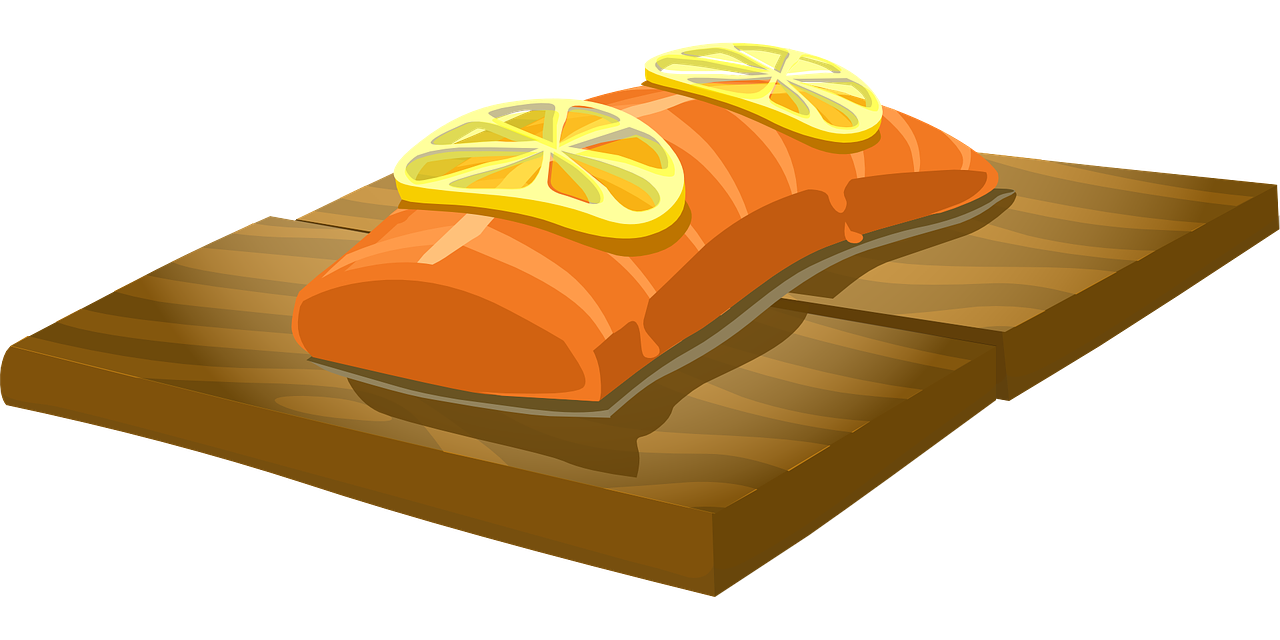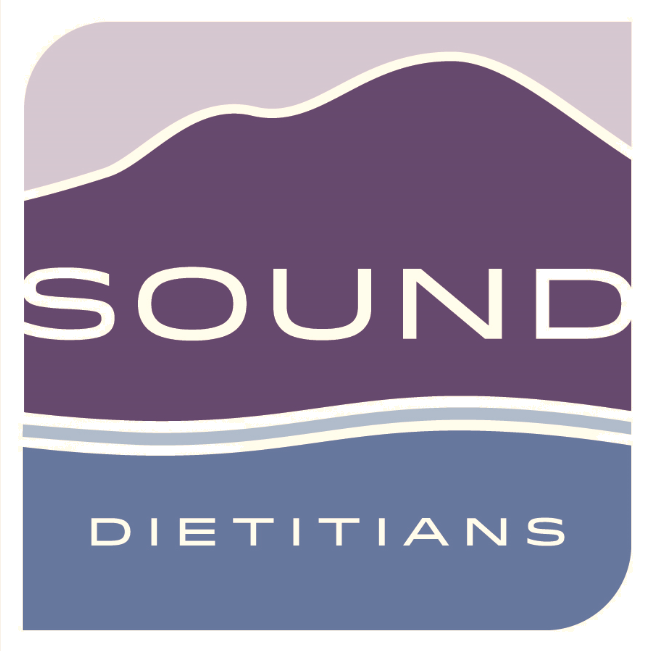|
The good: Omega 3 Fatty Acids & Vitamin D Fish and seafood have unique health benefits that can be difficult to get from other foods. You may have read before that fish have high amounts of omega-3 fatty acids, which are dietary unsaturated fats. Unsaturated fats are fats that are in their liquid form at room temperature (think olive oil and canola oil). Omega-3 fatty acids are essential for brain health and heart health and can lower your risk of heart disease, stroke, and even Alzheimer’s Disease. Fish and seafood also have vitamin D, which is not abundant in many foods. Many people, particularly in the Pacific Northwest, struggle to get enough vitamin D from the sun. Incorporating fish into our diet is a great way to combat this! Fatty fish such as salmon, herring, anchovies, and sardines, have more vitamin D and omega-3 fatty acids than fish with less fat. What about mercury? While they do have important nutrients, nearly all fish and seafood have varying amounts of mercury. Larger predatory fish (fish that eat other fish) generally have more mercury than smaller fish. It is good to avoid eating high-mercury fish often, but this is more of a concern for pregnant and breastfeeding women and children. For most people, eating low-mercury fish often is not harmful, and eating high mercury fish sparingly is okay, too. The Food and Drug Administration has done some work for us and created a list of fish with the lowest and highest amounts of mercury to guide your choices – see below!  Fish and the environment Like many foods, fish and seafood have sustainability considerations. The ways fish are harvested in the wild and fish farms have a varying impact on the environment. Some commercial tools can affect the physical environment, and some can catch species unintentionally. Certain seafood types are caught using tools that drag across the bottom of the ocean, like in the photo below. This can damage the seafloor and can displace other bottom-dwelling species. Some methods of catching fish and seafood allow for a more intentional capture, where the likelihood of catching and harming unwanted species is much lower. Explore Fishing and farming methods | Seafood basics to learn more about how different types of fish are caught! You can also look for specific certifications on your seafood packaging for sustainable options. Here are a few examples:
How much seafood should I eat? It is recommended to have two servings of fish per week, and these servings should be around 3-4 ounces (the size of your palm). If you are concerned about mercury content, you can choose from the “best” or “good” choices in the table above! Try these easy recipes for new ways to add seafood to your diet: Easy Pesto Salmon by A Couple Cooks One-Pan Seafood Roast by Cassie Best Shrimp Fajitas by The Modern Proper Fish and seafood are delicious and beneficial protein sources to add to our diet. Explore types of seafood and sustainable options to find the right way to incorporate fish into your week! Emma Suzuki, Dietetic Intern https://www.seafoodwatch.org/seafood-basics/fishing-and-farming-methods https://www.ncbi.nlm.nih.gov/pmc/articles/PMC3262608/ https://seafood.edf.org/benefits-eating-fish https://www.healthline.com/nutrition/11-health-benefits-of-fish#TOC_TITLE_HDR_2 https://www.fisheries.noaa.gov/national/bycatch/fishing-gear-dredges https://www.fda.gov/food/consumers/advice-about-eating-fish#pattern
1 Comment
|
SD BlogA place for our consultant Registered Dietitian Nutritionists (RDNs) to share nutrition science, yummy and healthy recipes, tips on seasonal ingredients, and other nutritional musings. Enjoy! Categories
All
Archives
May 2024
|







 RSS Feed
RSS Feed